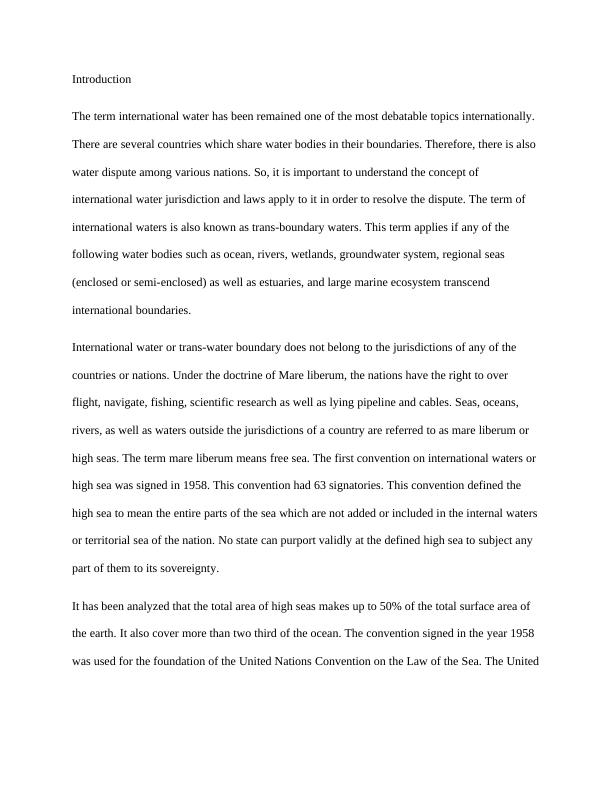Understanding International Water Jurisdiction and Laws
5 Pages1324 Words229 Views
Added on 2019-10-18
About This Document
The concept of international water jurisdiction and laws apply to it in order to resolve the dispute. Trans-boundary waters support the livelihoods and lives of millions of people all around the globe. There is a need to protect the water bodies in order to avoid social unrest. Learn about laws that apply in international water and major unresolved water disputes.
Understanding International Water Jurisdiction and Laws
Added on 2019-10-18
ShareRelated Documents
End of preview
Want to access all the pages? Upload your documents or become a member.
International Water Jurisdiction: Laws, Disputes, and Management
|7
|2219
|222
Coastal State's Jurisdiction over the Sea with Reference to UNCLOS 1982
|9
|3026
|1
Jamaica's Sovereign Rights in Territorial Waters: A Study of Maritime Law
|4
|680
|407
International Commercial Maritime Law
|12
|4453
|73
Corporate Environmental Management
|7
|1633
|63


